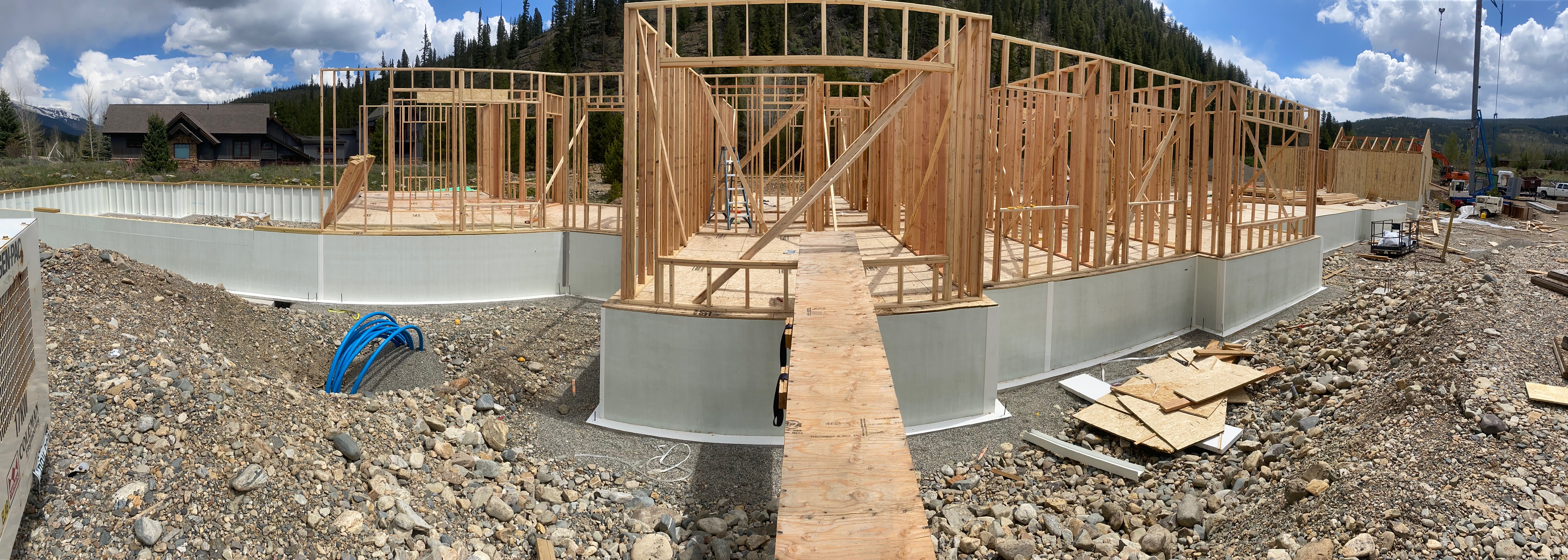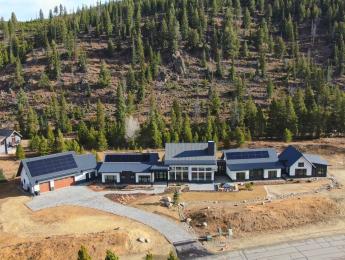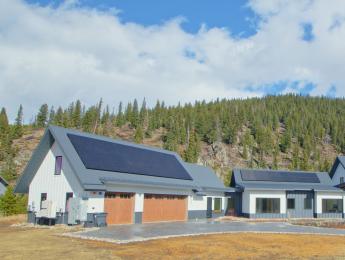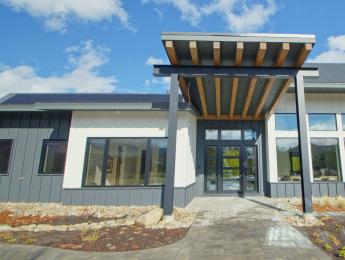New Methods Inspire Builders to Innovate

The use of cool, innovative, and commercially available materials, products, systems, and techniques
Testing new building practices, technologies, and materials can be risky for builders even when they plan to push the envelope of innovation. The trial-and-error approach to adopting cutting-edge products and systems can result in construction delays, costly callbacks, and potentially unhappy customers.
Fortunately, the Panorama Idea Home, a 6,600-square-foot custom home in Breckenridge, Colo., showcases a long list of successfully integrated innovation, from new technologies and building practices to materials and products that blaze the trail for other builders looking to deliver high-performance, healthy, and comfortable homes on time and within budget.
Innovation Delivers the Goods
Built by Thrive Home Builders at the edge of the wildland-urban interface of this mountain resort town, the Panorama Idea Home achieves a net-zero energy, carbon neutral, all-electric design through the combination of careful design and product specification.
Yes, onsite power generation using a rooftop photovoltaic array with battery power storage helps the home achieve certification as a Zero Energy Ready Home by the U.S. Department of Energy (DOE), but the building envelope is key to this project’s efficiency.
For instance, double-wall construction with 2x6s in the outer studs and offset 2x4s on the inside boosts the thermal value of the home’s perimeter walls to a hefty R-40.
And to ensure an air-tight seal, Thrive is using a non-toxic, aerosol-based technology that seeks out and seals small fissures and penetrations in the home’s thermal shell from the inside, effectively making it airtight. It also reduces time and costs compared to spot-sealing those areas (and likely missing a few).
New Methods Speed Construction
Thrive also employed several approaches to get the project completed more quickly and efficiently. Gene Myers, the company’s founder and chief sustainability officer, notes that for everything from the home’s foundation to the roof trusses, technology has helped manage the schedule.
For instance, instead of concrete, Thrive used an innovative fiberglass foundation system that took only five days to complete, Myers says. The home’s frame consists of factory-built wall panels, floor cassettes, and roof trusses, which he says “Helped achieve our goals for reducing jobsite waste, and shaved eight months off a traditional build schedule.
Meanwhile, prefinished wood floors also reduced installation time and eliminated the introduction of off-gassing volatile organic compounds (VOCs) into the occupied space, which would otherwise have to be mitigated to meet healthy indoor air quality standards.
Curbless shower pans were more of an aesthetic and convenience upgrade, but Myers points out that with KurbX’s shower pan system, installation was faster, easier, and provided better protection from leak drainage than traditional installs. The flush-mounted drain pans also were used under other potential leak areas, including the water heater, dishwasher, and laundry equipment.
Comfort Delivered to Customers
Allowing the homeowners to control various systems to achieve their desired levels of indoor comfort and convenience is important, but so is automation to help ensure an efficient, safe, and healthy indoor environment.
To address security and smart home electronics. Thrive decided to move away from typical off-the-shelf hub systems and chose Doorbird. The high-end, all wired system controls all electronic locks and features a coded entry, camera, doorbell, and intercom functions.
“Home technology is something that a builder can do better than anyone,” says Myers. “The control console is really attractive and offers the same functionality (as some others), but because it is hard-wired, the homeowners don’t need to change batteries.”
Meanwhile the Panorama Idea Home’s comfort and environmental systems are primarily automated. “This house is full of wood, and reliable, controlled humidification is necessary to keep it from drying out,” Myers says, while adding that relative humidity (RH) levels over 50% are a bad idea.
Therefore, the home’s in-line humidification system monitors levels to keep the home at a “sweet spot” of around 40% RH regardless of the outdoor climate and occupant behaviors indoors.
Indoor temperature also is maintained automatically to optimize comfort and efficiency. The home has two mechanical rooms and two zones. Every duct in the home’s revolutionary conditioned air distribution system is home run (instead of a traditional “daisy-chain” layout), helping modulate volume and temperature at each register more easily and efficiently.
While testing innovative and cutting-edge technologies does involve a certain amount of risk for builders, the advantages of delivering a more comfortable, efficient, and genuinely nifty new home can be a game-changer.
For more information about KurbX Products, visit: https://kurbx.com


